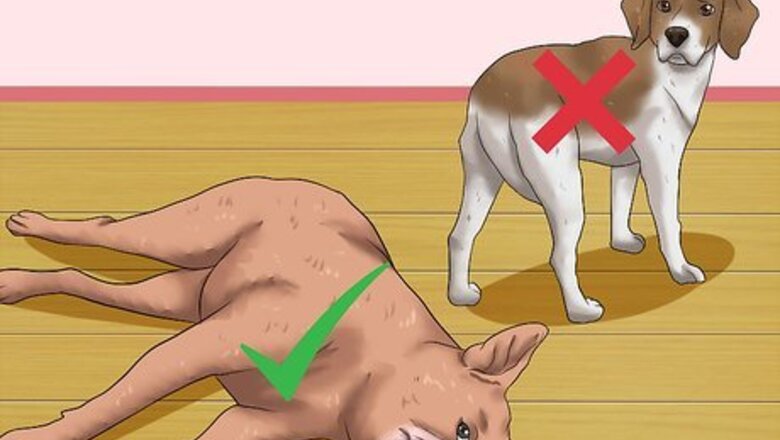
views
Understanding Your Dog’s Body Language
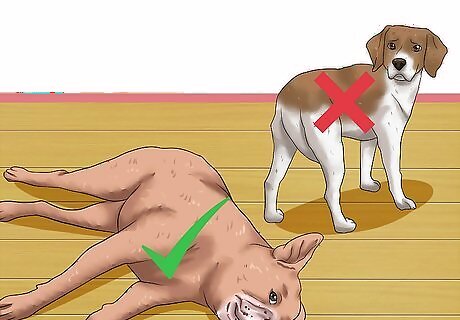
Observe your dog’s posture. Before you start rubbing your dog’s belly, look at his posture. If his body looks fluid and loose, then he’s feeling pretty relaxed and happy. If he looks tense, then he may not be very receptive to having his belly rubbed. If your dog is sleeping, let him sleep rather than waking him up to rub his tummy.
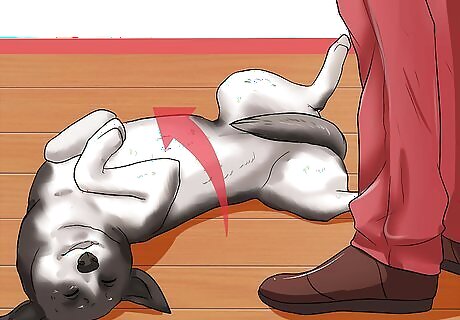
Determine if your dog is being submissive. Approach your dog. If your dog rolls onto his back as soon as you get closer to him, he is likely demonstrating submissive behavior. This submissive behavior may be accompanied by other submissive actions, such as licking the lips and tucking the tail. To the untrained eye, these actions look like an open invitation by your dog to rub his belly, but this is not necessarily the case. If your dog becomes submissive when you approach him, he may actually be intimidated by you and will not want you to rub his tummy right away. To make him more feel comfortable with you, get on the ground a small distance away from him. Call out to him and let him come over to you. When you call him, do not reach out to get him to come closer.
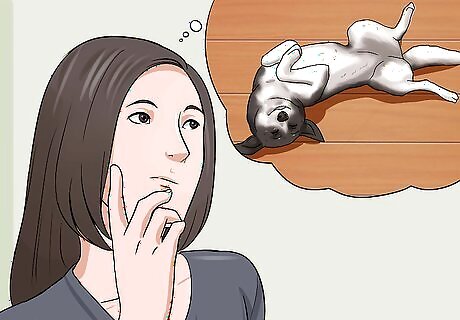
Understand why your dog presents his belly. Your dog may present his belly as a form of submission, but he may also be showing that he trusts you or wants to play. It is not always obvious what type of behavior your dog is showing. If you are unsure if your dog is being submissive versus being trusting or playful, your veterinarian can help you more fully understand the differences. When a dog lies on his back, he is putting himself in a vulnerable position. Provided that you and your dog have developed a close bond, he will probably be comfortable with allowing you to rub his tummy.
Rubbing a Dog’s Tummy
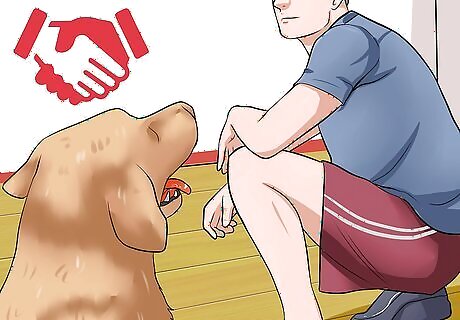
Gain your dog’s trust. If you and your dog have already established a trusting relationship, then you are well on your way to rubbing your dog’s tummy with ease. However, if your dog doesn’t fully trust you yet, there are a few things that you can do to gain his trust. Be calm when you approach him. If your dog hasn’t quite warmed up to you, staying calm as you approach him will help him see that you are not threatening and that he can trust you. Approach him from the side, rather walking towards him from the front; approaching him from the front could be intimidating for him. When you reach his side, kneel down or sit in the same direction that he is facing. Do not make eye contact, since direct eye contact can be perceived as a threat. When he is more comfortable with you being close to him, you can sit by his side and gently pet him. Talking to him in quiet and soothing tones will reduce anxiety that he may have with you touching him.
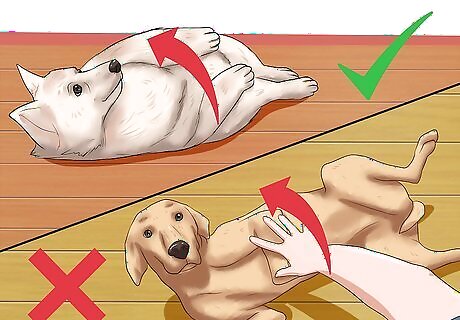
Observe if your dog rolls over. If your dog does not roll over on his own, he probably does not want to have his tummy rubbed. It is very important that you never force your dog to lie on his side; this can make him anxious and upset with you. Be respectful of his wish not to have his tummy rubbed.
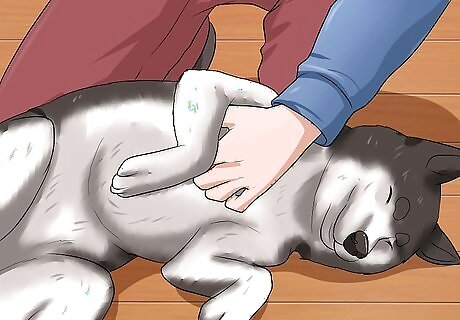
Pet your dog’s chest. Before rubbing your dog’s his tummy, start by petting his chest. If he growls or snarls when you start petting him, stop petting him right away. He’s giving you a very strong indication that he does not want to be petted. The growls and snarls can also be signs of aggression. A number of things, such as pain or behavioral disorders, could cause the aggression. Your veterinarian can conduct various medical and behavior tests to determine the cause of the aggression. If your dog is not showing signs of displeasure when you start petting him, continue to pet his chest. You can even weave your fingers through his fur to get him to be more comfortable.
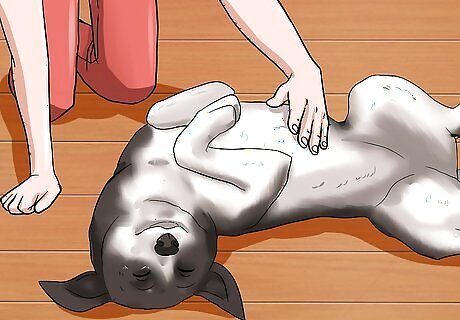
Rub your dog's tummy. When your dog has become comfortable with you petting his chest, move your hand down his body to start rubbing his tummy. By now, he should be very relaxed. Use slow and sweeping movements. Talking to him in quiet and soothing tones will help to keep him relaxed. Your dog may start kicking his back leg when you rub his tummy. Contrary to what many people think, this is not a sign that you hit your dog’s ticklish spot. His leg-kicking is actually an involuntary response called the scratch reflex. The scratch reflex occurs when nerves that are connected to your dog’s spinal cord are activated under the skin. Your dog will kick his leg automatically because his body perceives the nerve activation as an irritant on the skin. If you see your dog’s leg start to kick automatically, stop rubbing him in that area of his tummy and move to another area. If your dog seems to be enjoying the tummy rub, but then gets up and walks away, he is letting you know that he no longer wants his tummy to be rubbed. This is completely normal behavior, so there is no need to be concerned. If you feel his body tensing up when you rub his tummy, but then relaxes after you stop, he is giving you another indication that now is not the right time for a tummy rub.




















Comments
0 comment